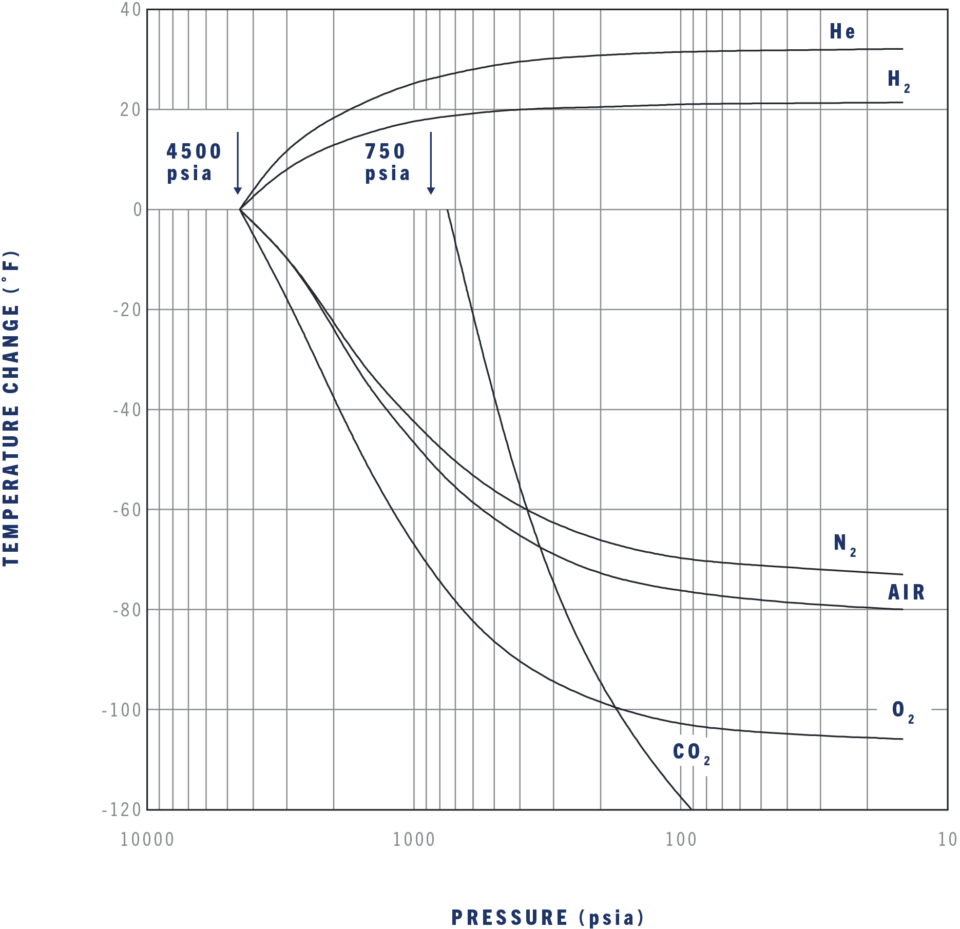When gas flows through an orifice it is subject to a throttling process. This results in the gas temperature changing to an extent determined by the pressure drop. Many of the common gasses will be chilled by throttling, although some gasses will increase in temperature.
A positive Joule – Thomson coefficient, which is a function of both temperature and pressure, will produce cooling of the gas. This is only the case below the “inversion” temperature. At the inversion temperature, the Joule – Thomson coefficient is zero, so no heating or cooling occurs.
The following graph allows the downstream temperature to be found when starting from an upstream pressure of 4500 psia or 750 psia for CO2. Solutions may be obtained for other upstream pressures by shifting the graph lines left or right so that the starting temperature (zero temperature change) point of the curve corresponds to the actual upstream pressure.
The graph is entered on the zero temperature change line at the point corresponding to the actual upstream pressure. Then the graph line, or a parallel line, for the applicable gas is followed to the right. When the value of the downstream pressure (read on the X-axis) is reached, the temperature change can be read on the Y-axis.
The graph works for a wide range of initial temperatures but is most accurate when the initial temperature is close to 70°F.
Note that the actual downstream temperature will not normally be as extreme as calculated due to heat transfer to or from the piping.

EXAMPLE:
A Lee Jet® restrictor is used in a 4500 psia helium gas system to obtain a pressure drop down to 300 psia starting with an upstream temperature of 80°F. What downstream gas temperature will results?
Enter the graph at the 4500 psia point and follow the helium line to a pressure of 300 psia. Then read the temperature change on the left hand scale. This value is +30°F; thus, the calculated downstream temperature is 110°F.
Always verify flow calculations by experiment.
*There are many parameters to consider when determining V-Factor. Click here for more information.